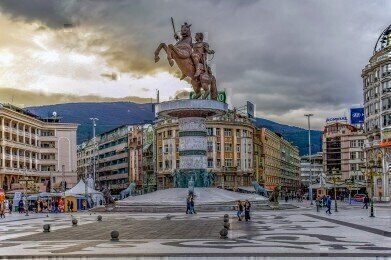Air Clean Up
Where Is the Worst Smog in Europe?
Jul 12 2020
There are plenty of pollution hotspots across Europe, especially in its southern regions, but one always comes out consistently on top of the pile: the North Macedonian capital of Skopje. Home to some 630,000 people, Skopje suffers from some of the poorest quality air in the whole world, thanks to geographical factors and the population’s reliance on damaging forms of energy generation.
The detrimental impact of that prolonged exposure should not be underestimated. The World Health Organisation (WHO) estimates that poor air quality is responsible for around 4,000 premature deaths each year in North Macedonia. Meanwhile, the fiscal damage wrought on the capital is thought to be equivalent to between €570 million and €1.47 billion per annum.
Poverty the chief problem
Skopje’s air quality isn’t helped by its geographical location. With high mountains on all sides, there is nowhere for the contaminants to go. That’s true in summer, when a lack of rainfall means the air is not regularly purified, but also in winter, when temperature inversion creates a layer of warmer air over the valley, locking the pollution underneath.
However, poverty is the biggest contributing factor. In a country where the average wage per month is just €250, people cannot afford to use environmentally friendly methods to heat their homes, instead resorting to the combustion of wood, biomass pellets or even plastic. Meanwhile, the omnipresence of old, polluting cars on the city’s streets and a real scarcity of public transport is also a significant factor.
Falling into line with the EU
Although not yet a member of the EU, North Macedonia is in the early stages of the accession process and is doing its utmost to keep up with European standards on industry emissions, with all power plants now required to apply for a special permit which certifies that they are taking adequate steps to curb their footprint.
However, there is a long way to go before the nation complies with the EU’s stringent air quality standards. In 2018, Skopje broke the legal thresholds for the contaminant particulate matter 10 (PM10) on 202 days out of 365. As such, it’s clear that politicians must make a concerted effort to clean up the emissions from heating, transport and industry before it can become an approved EU member.
Technology lends a helping hand
For significant stretches of the year, even just venturing outside is a dangerous business in Skopje, especially for those with respiratory problems. For the last five years, an app has helped those vulnerable people navigate the city’s streets more safely by taking advantage of low cost air quality monitors to communicate real-time information about pollution to those living in the capital.
Pioneered by engineering student Goran Jovanovski in 2015, AirCare uses the government’s own data to create a visual map of air quality in the city. A green circle means relatively safe air, a yellow one means pollution that doesn’t exceed EU limits, while a red one warns to stay indoors. Since its launch, AirCare has since been rolled out to all other 10 countries in the Balkan region and is providing countless individuals with the knowledge necessary to keep themselves as safe as possible.
Events
May 05 2024 Seville, Spain
May 13 2024 Munich, Germany
May 23 2024 Beijing, China
May 23 2024 Beijing, China
Jun 10 2024 Algiers, Algeria














